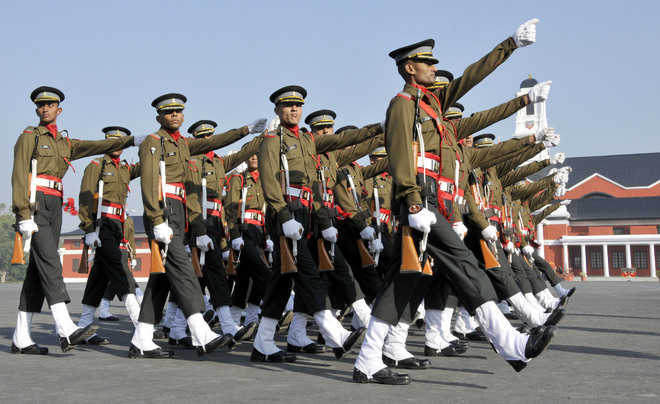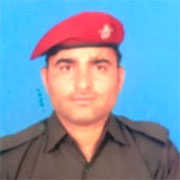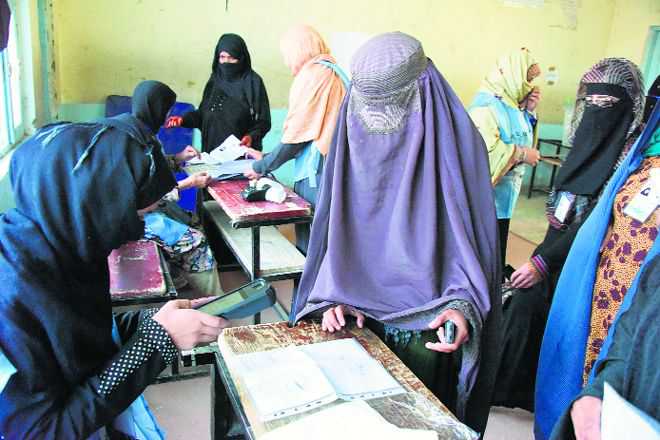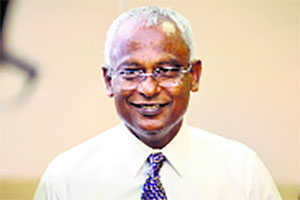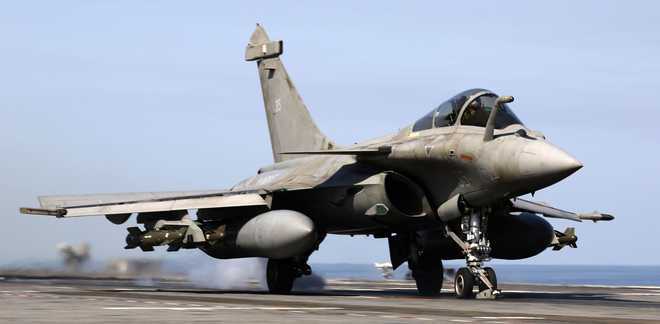
The document was supplied to the petitioners as per the apex court’s October 31 order. File photo
New Delhi, November 12
The Centre on Monday disclosed to the Supreme Court the pricing details for the 36 Rafale jets that were negotiated on “better terms” and said it “completely followed” the Defence Procurement Procedure laid out in 2013 and secured the CCS approval before the deal that has whipped up a political storm was inked with France.
The submission by the Centre was made in a 14-page document titled “Details of the steps in the decision making process leading to the award of 36 Rafale fighter aircraft order” that has since been made public.
But the pricing details provided in a sealed cover remained in the custody of the top court. Initially, the Centre was reluctant to part with the information on pricing saying it was not even disclosed in Parliament.
The details of the decision making process and pricing were placed in the court in compliance with its October 31 order. The court will now peruse both the documents and take up the matter on Wednesday.
A senior law officer, who did not want to be identified, said, “subject to various reservations, the price details of the deal have been filed in a sealed cover in the apex court”.
The document said the process as laid down in the Defence Procurement Procedure-2013 has been “completely followed” in procurement of the Rafale aircraft and the Cabinet Committee on Security (CCS) on August 24, 2016 approved the agreement which was arrived at after negotiations between the Indian and the French sides. The UPA was in power in 2013.
“The approval of Defence Acquisition Council (DAC) for procurement of 36 Rafale aircraft was taken, Indian Negotiating Team (INT) was constituted which conducted negotiations with the French side for about a year and approval of CCS being Chief Financial Authority (CFA) was taken before signing the IGA.”
The inter-government agreement (IGA) was signed by the defence ministers of both countries on September 23, 2016.
“As mandated by Defence Acquisition Council, Indian negotiating team completed negotiations and arrived at better terms relating to price, delivery and maintenance as compared to the earlier offer of Dassault Aviation,” the document said.
The Congress has alleged that the NDA government was procuring each aircraft at a cost of over Rs 1,670 crore as against Rs 526 crore finalised by the UPA government when it was negotiating a deal for procurement of 126 Rafale jets.
The document also addressed often repeated allegations by Congress president Rahul Gandhi that Prime Minister Narendra Modi forced the French company Dassault Aviation to select a Reliance group firm of Anil Ambani as an offset partner to help it “pocket” Rs 30,000 crore.
It stated that as per the Defence Offset Guidelines, the vendor is “free to select its Indian Offset Partners (IOPs) for implementing offset obligation”.
The document dealt in detail as to why state-owned PSU Hindustan Aeronautics Ltd (HAL) failed to become an offset partner in the deal as there were several unresolved issues it had with Dassault.
The Congress has alleged that Dassault has been pressured by the government to do away with the HAL as strategic offset partner by saying the future of India’s aerospace industry has been destroyed by snatching Rafale from HAL.
“The contract negotiations could not conclude mainly due to unresolved issues related to 108 aircraft to be manufactured in India. These issues pertained to lack of common understanding between HAL and Dassault Aviation on following,” the document said.
The document said HAL required “2.7 times higher man-hours compared to the French side for the manufacture of Rafale aircraft in India”.
The Congress said the government’s reply to the court is a “virtual admission” that the CCS was not consulted before finalising the contract with the French.
“There is a virtual admission that the Cabinet Committee on Security was not consulted before. You will consult after giving the contract or you will consult before the contract — contract meaning before giving a word to President and country of France,” Congress spokesperson Abhishek Singhvi told reporters.
The Rafale deal was announced in April 2015 in Paris after summit talks between Modi and French President Francois Hollande.
Referring to the earlier aborted deal, the document said Dassault was required to undertake necessary contractual obligation for 126 aircraft (18 direct flyaway and 108 aircraft manufactured in India) as per RFP requirements and contractual issues with HAL on manufacturing of 108 jets in India could not be resolved.
The NDA government referred to the failed deal during the UPA regime and said India’s adversaries in the meantime inducted modern aircrafts and upgraded their older versions and this necessitated the urgent need to procure the jets at a fly-away condition.
“As per available information, our adversaries inducted more than 400 fighters (equivalent to more than 20 Squadrons) during the period from 2010 to 2015. They not only inducted 4th Generation Aircraft but also inducted 5th Generation Stealth Fighter Aircraft,” it said.
The first petitions in the matter were filed by advocates M L Sharma, Vineet Dhanda and later AAP MP Sanjay Singh, through advocate Dheeraj Singh, also moved the apex court.
Thereafter, former Union Ministers Yashwant Sinha, Arun Shourie along with advocate Prashant Bhushan also filed a joint petiiton for registration of an FIR in the Rafale deal. — PTI









